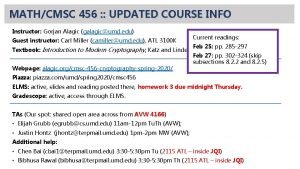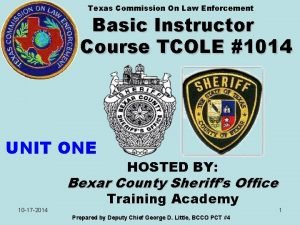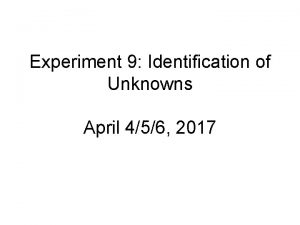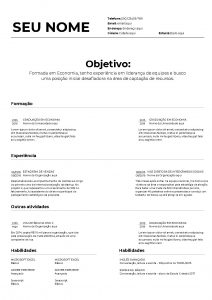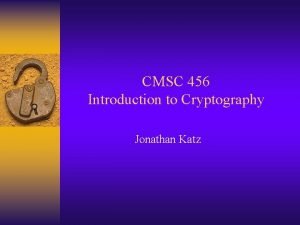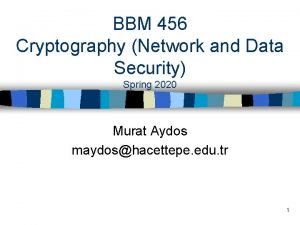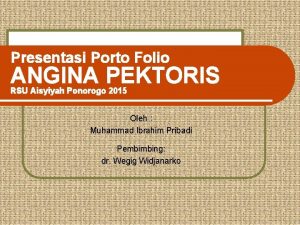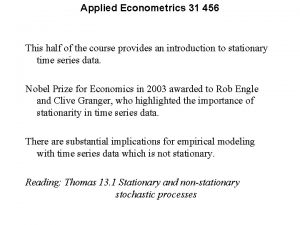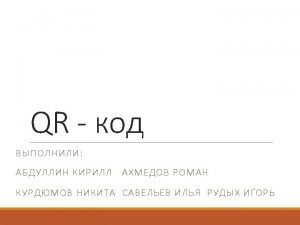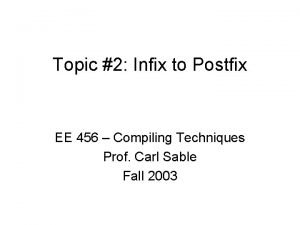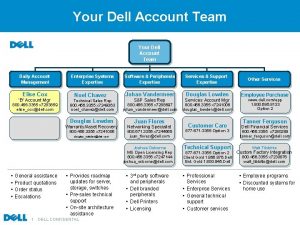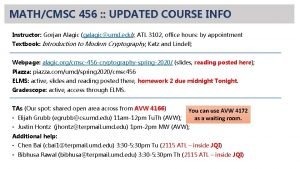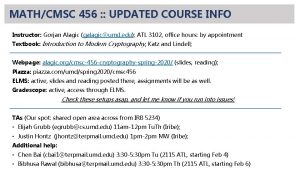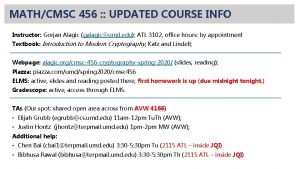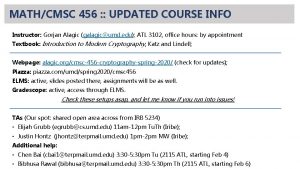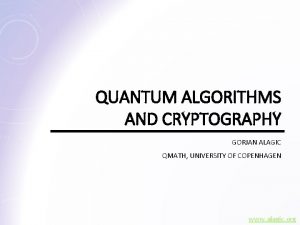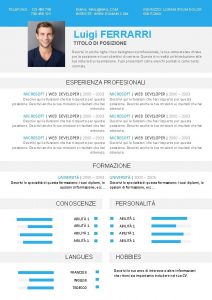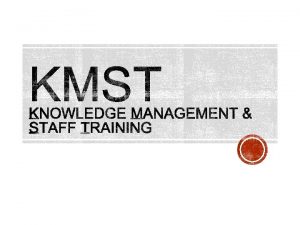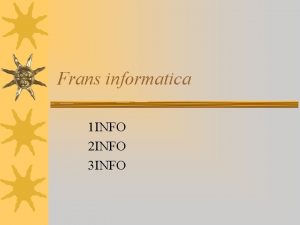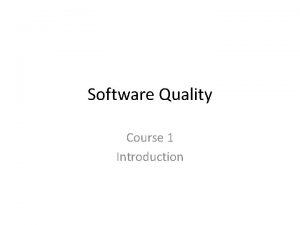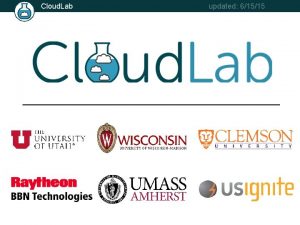MATHCMSC 456 UPDATED COURSE INFO Instructor Gorjan Alagic







































- Slides: 39

MATH/CMSC 456 : : UPDATED COURSE INFO Instructor: Gorjan Alagic (galagic@umd. edu); ATL 3102, office hours: by appointment Textbook: Introduction to Modern Cryptography, Katz and Lindell; Webpage: alagic. org/cmsc-456 -cryptography-spring-2020/ (slides, reading posted here); Piazza: piazza. com/umd/spring 2020/cmsc 456 ELMS: active, slides and reading posted there, homework 2 due midnight Tonight. Gradescope: active, access through ELMS. TAs (Our spot: shared open area across from AVW 4166) • Elijah Grubb (egrubb@cs. umd. edu) 11 am-12 pm Tu. Th (AVW); You can use AVW 4172 as a waiting room. • Justin Hontz (jhontz@terpmail. umd. edu) 1 pm-2 pm MW (AVW); Additional help: • Chen Bai (cbai 1@terpmail. umd. edu) 3: 30 -5: 30 pm Tu (2115 ATL – inside JQI) • Bibhusa Rawal (bibhusa@terpmail. umd. edu) 3: 30 -5: 30 pm Th (2115 ATL – inside JQI)

RECAP: Merkle-Damgård transform. …

RECAP: Merkle-Damgård transform Remember: • critical property we needed for integrity checks… • … and for Hash-and-MAC… • … was collision-resistance! What happens when we apply MD? See book for proof. It’s fairly straightforward.

RECAP: RANDOM ORACLES • A strong hash function (like SHA-3) is developed and standardized. LOOKS LIKE



Random Oracle Model (ROM). What crypto can we build in this model? ROM ? PRG PRF IND-CPA encryption collision-resistant hash unforgeable MAC (fixed-length) unforgeable MAC (arbitrary-length)

IMPORTANT! NEW IDEAS! •

Key •

Key • Honestly generated

• Key

Key •

Key •

Mac Key • for tag generation Ver Key for tag verification

Mac Key • for tag generation Ver Key for tag verification

DIGITAL SIGNATURES Old setting: one key, shared privately. Alice Bob PUBLIC-KEY CRYPTOGRAPHY! New setting: private signing key, public verification key. Alice • only Alice can sign • anyone can verify

LAMPORT SIGNATURE SCHEME New setting: private signing key, public verification key. PUBLIC Alice

LAMPORT SIGNATURE SCHEME New setting: private signing key, public verification key. PUBLIC Alice

LAMPORT SIGNATURE SCHEME New setting: private signing key, public verification key. PUBLIC Alice

LAMPORT SIGNATURE SCHEME New setting: private signing key, public verification key. PUBLIC Alice

LAMPORT SIGNATURE SCHEME New setting: private signing key, public verification key. PUBLIC Alice verification: check that

LAMPORT SIGNATURE SCHEME • an inversion occurred here!

DIGITAL SIGNATURES Compare to MACs:

PUBLIC-KEY CRYPTOGRAPHY (a teaser)

SO FAR… Eve Until we saw Lamport… • all schemes used shared secret keys; • this comes with a problem: how do you share the secret safely? • you can’t use crypto… • … so you’re left with some physical method • … and if that’s intercepted (or searched without you knowing), all your crypto is pointless.

SO FAR… Eve There’s other problems with secret keys… Like symmetry! Consider authentication: • with a MAC, generating tags and verifying tags are coupled together; • if Alice shares a key with Bob… • … she doesn’t just grant Bob the ability to verify the authenticity of her messages; • … she also grants him the ability to authenticate them with her key! So, to a third party, Bob could pretend to be Alice! How do we solve that problem? (By the way, this is also why secret-key crypto is sometimes called symmetric-key crypto. )

COMMUNICATION OVER PUBLIC CHANNELS? Maybe the problem is just unavoidable? Alice E R U At first… N I Y • it might seem like this is just how things are… • after all, if you and another party don’t share a secret… • … how can you possibly communicate securely? L L A T O T Lamport is certainly interesting, but it’s one time, and only a signature scheme. • what about encryption? • and what about the key sharing problem? • are these problems even solvable? C E S Bob

COMMUNICATION OVER PUBLIC CHANNELS? If you think this sounds impossible… (you could be a professor at Berkeley!) … you’re in good company! In 1974, an undergrad named Ralph Merkle took a security course at UC Berkeley. For the course project, he proposed the following:

COMMUNICATION OVER PUBLIC CHANNELS? • (you could be a professor at Berkeley!)

COMMUNICATION OVER PUBLIC CHANNELS? A few years earlier. . . In 1969, cryptographers in GCHQ (British NSA) discovered a protocol for public-key crypto! (This was not known to the public until 1997. ) In the public world. . . • two years after Merkle’s discovery… • in 1976, Whitfield Diffie and Martin Hellman discovered a key-exchange protocol. • What does Diffie-Hellman key exchange do? Something magical!

KEY EXCHANGE Diffie-Hellman key-exchange. What does Diffie-Hellman key exchange do? Something magical! • two parties are separated by an insecure channel (just like in encryption); • but they do not share any secret information! • and yet, after sending a few (insecure) messages in the open… • they suddenly share a secret key! • WHAT? C E S N I Y L L Alice T A T O E R U Bob

KEY EXCHANGE SECRET-KEY CRYPTO What then? • after key exchange is performed… • … we are now in the setting we assumed for: 1. secret-key encryption 2. message authentication So: we can then use all the tools we learned about so far!

ASYMMETRIC CRYPTO Is there another way? Recall how Lamport worked. Alice • no key exchange required; • one private key, one public key; • asymmetric roles: private key enables signing, public key enables verification. This can be extended to digital signatures for any number of messages! What about encryption? • can there be an asymmetric encryption scheme too? • what’s the right asymmetry? • public key encrypts; private key decrypts.

ASYMMETRIC CRYPTO Public-key encryption Alice

ASYMMETRIC CRYPTO Public-key encryption Alice Bob

ASYMMETRIC CRYPTO Public-key encryption For two-way communication, Bob can do the same thing Alice did. Alice Bob

PUBLIC-KEY CRYPTOGRAPHY Clearly… … public-key crypto is awesome! How do we get there? • we don’t know how to build it out of “generic things”… • … like PRGs or PRFs. • we need specific computational assumptions… • … and these assumptions require some math. Specifically, some number theory. So some work will be involved, but it will be very worthwhile!

THE PLAN Clearly… … public-key crypto is awesome! How do we get there? • we don’t know how to build it out of “generic things”… • … like PRGs or PRFs. • we need specific computational assumptions… • … and these assumptions require some math. Specifically, some elementary number theory! So some work will be involved, but it will be very worthwhile!

THE PLAN Next 6 weeks: Topic Dates Intro and symmetric-key cryptography (8 lectures) January 28 – February 20 RSA and Diffie-Hellman (4 lectures + 1 hwk) Carl Miller February 25 – March 5 Secret sharing (2 lectures + 1 hwk) Bill Gasarch March 10 - 12 Fun guest lecture March 24 Midterm review March 26 Midterm March 31 Fun guest lecture (blockchain, likely) April 2 I’m back. April 7 - end
 Gorjan alagic
Gorjan alagic Tcole advanced instructor course
Tcole advanced instructor course Basic instructor course tcole
Basic instructor course tcole Tcole 1014 basic instructor course
Tcole 1014 basic instructor course Jrotc marksmanship instructor course online
Jrotc marksmanship instructor course online Pepperball launcher nomenclature
Pepperball launcher nomenclature Marksmanship instructor
Marksmanship instructor Basic instructor course texas
Basic instructor course texas Basic instructor course #1014
Basic instructor course #1014 Tcole advanced instructor course
Tcole advanced instructor course Tcole advanced instructor course
Tcole advanced instructor course Basic instructor course texas
Basic instructor course texas Basic instructor course tcole
Basic instructor course tcole Basic instructor course #1014
Basic instructor course #1014 Ipcrf-dp from phase ii
Ipcrf-dp from phase ii The symbol tsfa in alu operations include
The symbol tsfa in alu operations include Identification test for esters
Identification test for esters 123 + 456 x 789
123 + 456 x 789 Cmsc 456 3 cryptology cryptology.com
Cmsc 456 3 cryptology cryptology.com Find the local tax deducted: $456 biweekly, 2 1/2 % tax.
Find the local tax deducted: $456 biweekly, 2 1/2 % tax. Bbm 456
Bbm 456 Carecentrix portal
Carecentrix portal 123456 xxxx
123456 xxxx Concrete mixture ratio
Concrete mixture ratio Tingkat kesadaran
Tingkat kesadaran What is half of 456
What is half of 456 12345678123
12345678123 456 name
456 name Write a number in expanded form. 456
Write a number in expanded form. 456 Infix to postfix conversion rules
Infix to postfix conversion rules Concrete grade ratio table
Concrete grade ratio table Gcs 456
Gcs 456 8004563355
8004563355 123 + 456 + 789
123 + 456 + 789 (123)456-7890
(123)456-7890 One way slab design example as per is 456
One way slab design example as per is 456 Cmsc 456 3 cryptology
Cmsc 456 3 cryptology 132 shotgun crip
132 shotgun crip Chaine parallèle muscle
Chaine parallèle muscle One and half brick wall
One and half brick wall
